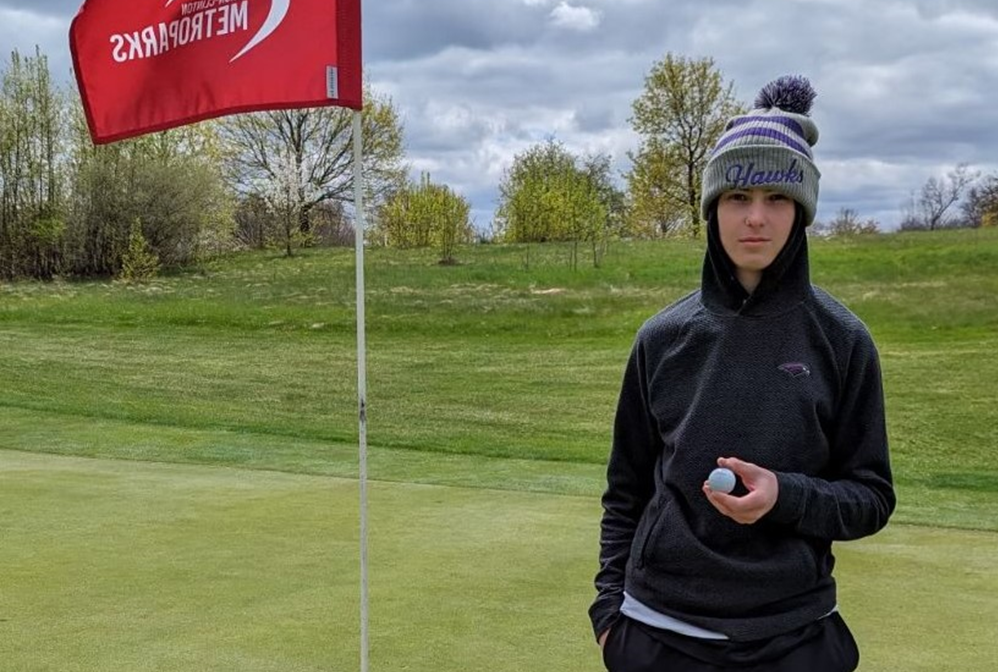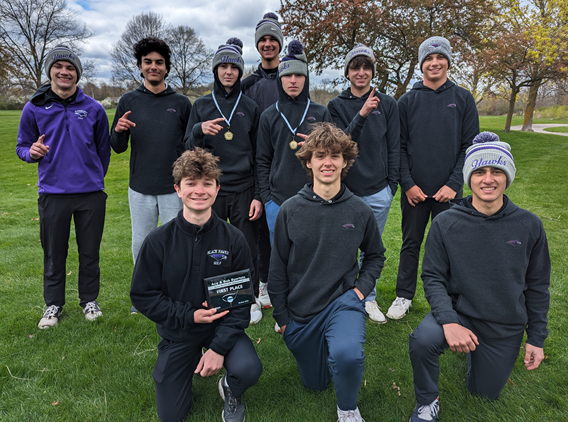
Keep on Coaching
February 1, 2013
By Geoff Kimmerly
Second Half editor
A few weeks ago, I finally got my first chance this season to watch a friend coach his basketball team. After guiding some others at the lower levels, this is his first time running the varsity – something he wasn't sure he wanted to do with a 1-year-old just learning to walk, but a challenge he ended up taking on to the benefit of all those involved.
Simply put, he’s good. I've seen a lot of teams and a lot of coaches over the past 15 years, and although I wouldn't know much of what to do if I were walking the sideline, I felt pretty qualified in telling him I was impressed – even if he didn't buy that I was offering an unbiased opinion. The best news is he’s gone from not sure about this a few months ago to talking about next season.
We know, at least anecdotally, that coaching continues to get more challenging. The time commitment has grown substantially to make running a program a year-round endeavor in a lot of sports at a lot of schools.
That commitment – especially for coaches with children of their own – was a main reason referred to in a New Haven Post-Chronicle story Saturday that noted 23 football coaching openings in Connecticut at one point this offseason. That state has 146 football teams – meaning roughly 15 percent will have new leaders this fall.
And that got me thinking about my friend, about how glad I am he’s given this a shot, and how I've seen so many others either not do so, or not stick around long despite having some pretty nice success.
A study published last winter in Interscholastic Athletic Administration magazine – a product of the National Interscholastic Athletic Administrators Association – noted some predictable results of a study that sought to determine the biggest challenges faced by first-year high school coaches.
The toughest according to the study was balancing the demands of coaching and teaching, experienced by nearly half the respondents – 98 percent of which coached high school teams and 81 percent of which are teachers.
The next six reasons all were noted by at least 30 percent of those in the study – personal fatigue, securing community support, securing and caring for facilities and equipment, parental contact, keeping non-starting players motivated, dealing with schedule interruptions and motivating athletes to achieve consistent, peak performance.
Nothing there is earth-shaking, and most if not all of these challenges are faced by high school coaches regardless of how long they've been in the field. But I got a little more perspective from some of the 32 items that ranked as least challenging to the first-year leaders – keeping in compliance with state and league regulations, dealing with substance abuse issues, teaching sport skills and creating a positive team atmosphere – things that seem most important, and yet appear to be easiest to do. I’m not sure what that tells us – but I think it tells us something.
Click to check out the entire three-page breakdown of the study, plus the researchers’ recommendations to remedy some of what first-year coaches face.
Giving back to Saginaw
I love reading about high-level athletes – like a star-studded group of alums from Saginaw – giving back to where they got their starts.
Pittsburgh Steelers star LaMarr Woodley made a big impact before the start of this school year by donating $60,000 to cover all participation fees for athletes in his former school district. The Saginaw News’ Hugh Bernreuter writes today about how Woodley (Saginaw High), the Philadelphia 76ers’ Jason Richardson (Saginaw Arthur Hill) and former Oakland Raiders standout Stu Schweigert (Saginaw Heritage) have combined to give more than $865,000 back to their home communities.
Bernreuter also mentions the non-monetary contributions of the Golden State Warriors’ Draymond Green (Saginaw High) and former Indianapolis Colts receiver Blair White (Saginaw Nouvel).
Click to read more about it.
Quote(s) of the Week
While rifling through more papers on my desk, I found an article from the Washington Post from Sept. 2011 titled “How high school sports save our schools.” I was drawn to it in part because I spent more than a decade in a newsroom, and it was a piece by a reporter covering education who instead of reporting on school boards and the like, delved into the importance of interscholastic athletics to education as a whole.
He spoke of how participation continues to grow even as resources dwindle, and of data supporting that extracurriculars like sports are more effective than academic classes in teaching leadership, teamwork, time management and “other skills crucial for success in the workplace.” Later, he mentioned a study noting that those who participate in extracurriculars earned more a decade later.
Click here to read the entre piece. These passages struck me most.
“Coaches might be the only faculty members still allowed by our culture and educational practice to get tough with students not making the proper effort. They have the advantage of teaching what are essentially elective non-credit courses. They can insist on standards of behavior that classroom teachers often cannot enforce because the stakes of dismissing or letting students drop their courses are too high. …
“Students do better in activities they choose. If we provide more of them, led by committed adults … that can make a difference. We know the bad news about education. Dropout rates are high. Achievement scores are stagnant. But sports participation is going up, despite pressure to cut it back. Let’s cheer about that and look for a way to draw in more students.”

Bloomfield Hills JV Golfer Adds Rare Highlight to Strong Spring with Par-4 Hole-In-One
By
Tom Lang
Special for MHSAA.com
May 24, 2024
Freshman Lucas Dostal was just aiming for a drive down the middle of the par-4 17th fairway.
Just seconds later, he finished the hole at Hudson Mills Metro Park in that one swing with the driver.
The Bloomfield Hills junior varsity player didn’t see from the tee his ace on the 329-yard hole drop in the cup, so the reaction was delayed – but still refreshing.
“I hit a draw, so the ball started right, then went left and it was kinda going toward the pin but it was too hard to see,” he said in an email. “The ground was firm, and there was some down wind.
“I didn’t see the ball at all go in, but once I realized it, I was in shock. It helped me shoot a really good 71, but I tripled bogeyed (4-putt) the last hole so that kinda ruined it.”
Spoken like a true competitive golfer.
That 71 was good for medalist at the tournament April 20 versus other JV teams like Detroit Catholic Central, Novi and Grand Blanc, and brought way more attention to his game than he’d like.
The program’s junior varsity coach David Lumsden, a North Hills middle school teacher, said a lot of people assumed he’d be bumped up to varsity very soon; even local media talked that way. After all, it was the first tournament of the season, and Dostal comes into the clubhouse with an albatross and a win.
 “He is a good golfer, and the first thing I did was email the varsity coach and said I think this kid has got the goods to be on varsity,” Lumsden said. “We had purposefully left two varsity spots open because we have so many young kids who are good golfers; we didn’t know who to choose and left two spots (flexible). I suggested Lucas, but we agreed since he was a freshman to give him a couple more events and see how he does.
“He is a good golfer, and the first thing I did was email the varsity coach and said I think this kid has got the goods to be on varsity,” Lumsden said. “We had purposefully left two varsity spots open because we have so many young kids who are good golfers; we didn’t know who to choose and left two spots (flexible). I suggested Lucas, but we agreed since he was a freshman to give him a couple more events and see how he does.
“I think he shot in the high 70s the next tournament and the 80s after that. And Lucas came to me after that and said, ‘Coach, can you put me on the B team?’ I think the pressure was getting to him being No. 1 on the A team. So, me and the varsity coach agreed he needs a year on JV to play in some more matches and tournaments and grow into that varsity position.”
The JV team went 9-0 this spring in dual meets and finished in the top 10 in five of six tournaments.
“He’s going to be a great golfer,” Lumsden said. “There’s no part of his game that is lacking. He’s got a great short game. Off the tee he’s amazing. And I’ve watched him make really great recovery shots with his irons. He’s going to be really good; we’re just taking it slow. Don’t want to put all this pressure on him and end up having him quit golf too early.
“Lucas is very mild-mannered. He doesn’t talk a lot. He loves golf and has a brother (Domonic) playing on the varsity team who’s really good too. They are both golf fanatics and love the game. It’s very enjoyable to watch him getting into it and getting used to being a good golfer and getting this kind of recognition. He’s not been bragging about anything, and he’s just a solid golfer.”
If Dostal does make varsity in 2025, he should be joining his brother for that one year together on the team.
“The awareness (of his game) is there,” Lumsden said. “He’s really got the temperament to be somebody that’s going to be a top golfer.
“Many of the top golfers in the state are here in Southeast Michigan, so he’s got a lot of good competition. He might be used to going out with his buddies and beating them by 10 strokes with no problem; now he’s going against kids who are just as good as he is, or better.
“And this is just JV golf. Once you go to varsity, those kids go really low.”
PHOTOS (Top) Bloomfield Hills’ Lucas Dostal shows the ball he drove into the hole next to him for a par-4 hole-in-one April 20 at Hudson Mills Metro Park. (Middle) Dostal, standing third from right, is joined by his team after they won the Ace & Bob Byerlein JV Tournament that day. (Photos courtesy of the Bloomfield Hills JV golf program.)

